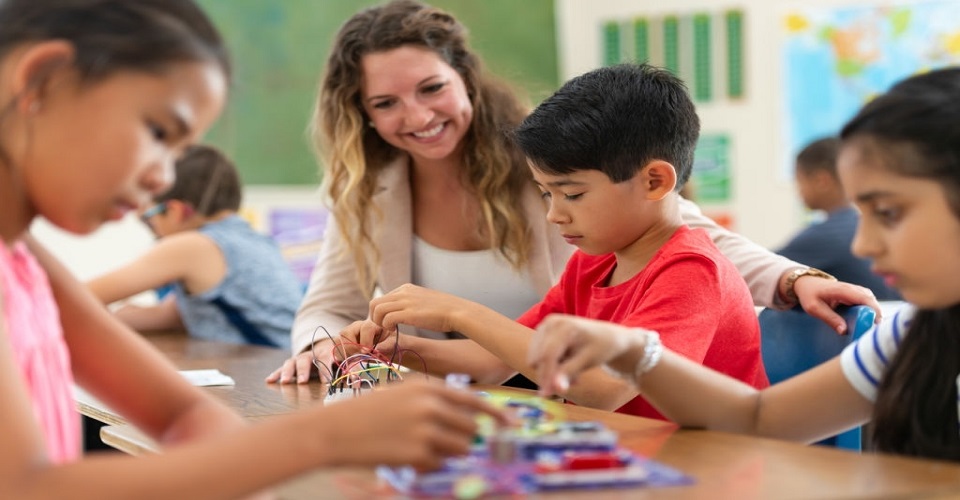
6 Essential Principles Of Genius Hour In The Classroom
7th July 2021
Usually, in traditional classroom lessons, students every so often do not get a chance to discover their creativity or inquisitiveness. Moreover, lessons are sometimes quite controlled and time-bound which often cages the creative thinking of apprentices. As a part of modern teaching techniques, the Genius hour comes as a solution. So, what is a genius hour? Let’s find out.
Genius Hour
Genius hour is a measure that lets students discover their own passions and boosts inventiveness in the classroom. The genius hour acts for an elementary student as an education tool to establish self-learning and passion-driven exertion. Genius hour seems to be a much more operative, educational method of instruction.
In Genius hour, teachers focus on what motivates school children. Teachers then modify what, they teach to their precise skills and character individualities. This format also delivers freedom of choice, boosts creativity and exploration.
If you ask about the origin of the Genius hour, then we need to understand the search-engine giant, Google. It allows its engineers to spend at least 20% of their time working on any project that they want. The idea is very simple, it’s just allowing individuals to work on something that comforts them, and productivity will go up and about. Google’s strategy has worked so well that it has been said that 50% of Google’s projects have been formed during this creative time period. Can you imagine? One more origin of Genius hour projects came from the book ‘Drive’ by best-selling author, Daniel Pink. In a blog post he writes about Google ---
“Each week, employees can take a Genius Hour — 60 minutes to work on new ideas or master new skills. They’ve used that precious sliver of autonomy well, coming up with a range of innovations including training tools for other branches.”
Principles Of Genius Hour
Experts have accumulated the list of basic principles to implement Genius hour in a classroom:
1. Sense of Purpose
Learners need to find their own sense of determination in what they study, make sense of, and produce. Most of the students think that their academic tasks are a heavy load, sometimes they show no yearning for attending lectures in the morning and do homework. Thus, education needs to become a thoughtful choice, and each project should be done with a sense of purpose.
2. Design
Students are left to design their own learning experiences without teachers’ scaffold content. Learners are free to elect knowledge content with the most appropriate design. Students can use a variety of information foundations, and get exclusive in-class experiences. No one forces them to complete unloved assignments or read textbooks if they do not want it.
3. Inquiry & Navigation
In a genius hour, students make sense of ideas significant to them. They do it through measuring opportunity, navigation of unfiltered content, gathering information, and lessened research. They review their own competencies, regulate knowledge breaches, conduct all-embracing research in weak parts and so on. They also navigate through information and collect data relating to their academic needs.
4. Create
Learners don’t acquire much knowledge when they exclusively focus on reading textbooks and taking notes. Students usually advance their knowledge only when they are provided with hands-on experience with practical exercises. Therefore, teachers need to ensure school children get to work with real-life issues so to accomplish that by giving apprentices project-based learning, creating models, and motivating them. While working with hypothetical complications, apprentices not only engross but also generate knowledge.
5. Socialisation
In a genius hour, connections are made! Students connect with educators to strategise, peers, to produce, and professionals along with community members to create a sense of purpose for their effort.
6. 80/20 Rule
Educators need to follow an 80/20 rule by allowing learners at least 20% time to work on things they are most inquisitive about within the context of education. The rest 80% will be of the traditional ways of education. Instructors may also choose the time for Genius hour whether they should give 10 minutes per lesson, 1 hour per day, or maybe 1 day per week. Each instructor is allowed to select whatever plan suits the classroom.
And…the same Genius hour principles implemented in the classroom as they do in the corporate setting. All over the development, the teacher helps the pupil projects to safeguard that they are on task.
Conclusion
This non-traditional teaching tool has been a significant part of the latest teacher training courses. Genius hour raises awareness and creative thinking in your students. If you can implement it correctly, you will see the amazing learning outcomes and create meaningful acquaintances to vital concepts in your school children’s life. Also, using technology with the incorporation of the blended learning tools and techniques, you can take your Genius hour to the next level.
Share your feedback so that we can cultivate it!
Written By : Katharina




